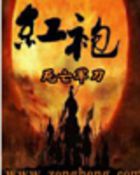Of course,we do not here pretend to furnish a history of the battle of Waterloo;one of the scenes of the foundation of the story which we are relating is connected with this battle,but this history is not our subject;this history,moreover,has been finished,and finished in a masterly manner,from one point of view by Napoleon,and from another point of view by a whole pleiad of historians.[7]
[7]Walter Scott,Lamartine,Vaulabelle,Charras,Quinet,Thiers.
As for us,we leave the historians at loggerheads;we are but a distant witness,a passer-by on the plain,a seeker bending over that soil all made of human flesh,taking appearances for realities,perchance;we have no right to oppose,in the name of science,a collection of facts which contain illusions,no doubt;we possess neither military practice nor strategic ability which authorize a system;in our opinion,a chain of accidents dominated the two leaders at Waterloo;and when it becomes a question of destiny,that mysterious culprit,we judge like that ingenious judge,the populace.
BOOK FIRST.-WATERLOO
Ⅳ A
Those persons who wish to gain a clear idea of the battle of Waterloo have only to place,mentally,on the ground,a capital A.The left limb of the A is the road to Nivelles,the right limb is the road to Genappe,the tie of the A is the hollow road to Ohain from Braine-l'Alleud.The top of the A is Mont-Saint-Jean,where Wellington is;the lower left tip is Hougomont,where Reille is stationed with Jerome Bonaparte;the right tip is the Belle-Alliance,where Napoleon was.
At the centre of this chord is the precise point where the final word of the battle was pronounced.
It was there that the lion has been placed,the involuntary symbol of the supreme heroism of the Imperial Guard.
The triangle included in the top of the A,between the two limbs and the tie,is the plateau of Mont-Saint-Jean.The dispute over this plateau constituted the whole battle.
The wings of the two armies extended to the right and left of the two roads to Genappe and Nivelles;d'Erlon facing Picton,Reille facing Hill.
Behind the tip of the A,behind the plateau of Mont-Saint-Jean,is the forest of Soignes.
As for the plain itself,let the reader picture to himself a vast undulating sweep of ground;each rise commands the next rise,and all the undulations mount towards Mont-Saint-Jean,and there end in the forest.
Two hostile troops on a field of battle are two wrestlers.
It is a question of seizing the opponent round the waist.
The one seeks to trip up the other.
They clutch at everything:
a bush is a point of support;an angle of the wall offers them a rest to the shoulder;for the lack of a hovel under whose cover they can draw up,a regiment yields its ground;an unevenness in the ground,a chance turn in the landscape,a cross-path encountered at the right moment,a grove,a ravine,can stay the heel of that colossus which is called an army,and prevent its retreat.
He who quits the field is beaten;hence the necessity devolving on the responsible leader,of examining the most insignificant clump of trees,and of studying deeply the slightest relief in the ground.
The two generals had attentively studied the plain of Mont-Saint-Jean,now called the plain of Waterloo.
In the preceding year,Wellington,with the sagacity of foresight,had examined it as the possible seat of a great battle.
Upon this spot,and for this duel,on the 18th of June,Wellington had the good post,Napoleon the bad post.The English army was stationed above,the French army below.
It is almost superfluous here to sketch the appearance of Napoleon on horseback,glass in hand,upon the heights of Rossomme,at daybreak,on June 18,1815.
All the world has seen him before we can show him.
That calm profile under the little three-cornered hat of the school of Brienne,that green uniform,the white revers concealing the star of the Legion of Honor,his great coat hiding his epaulets,the corner of red ribbon peeping from beneath his vest,his leather trousers,the white horse with the saddle-cloth of purple velvet bearing on the corners crowned N's and eagles,Hessian boots over silk stockings,silver spurs,the sword of Marengo,——that whole figure of the last of the Caesars is present to all imaginations,saluted with acclamations by some,severely regarded by others.
That figure stood for a long time wholly in the light;this arose from a certain legendary dimness evolved by the majority of heroes,and which always veils the truth for a longer or shorter time;but to-day history and daylight have arrived.
That light called history is pitiless;it possesses this peculiar and divine quality,that,pure light as it is,and precisely because it is wholly light,it often casts a shadow in places where people had hitherto beheld rays;from the same man it constructs two different phantoms,and the one attacks the other and executes justice on it,and the shadows of the despot contend with the brilliancy of the leader.Hence arises a truer measure in the definitive judgments of nations.Babylon violated lessens Alexander,Rome enchained lessens Caesar,Jerusalem murdered lessens Titus,tyranny follows the tyrant.It is a misfortune for a man to leave behind him the night which bears his form.
BOOK FIRST.-WATERLOO
Ⅴ THE QUID OBSCURUM OF BATTLES
Every one is acquainted with the first phase of this battle;a beginning which was troubled,uncertain,hesitating,menacing to both armies,but still more so for the English than for the French.
It had rained all night,the earth had been cut up by the downpour,the water had accumulated here and there in the hollows of the plain as if in casks;at some points the gear of the artillery carriages was buried up to the axles,the circingles of the horses were dripping with liquid mud.















